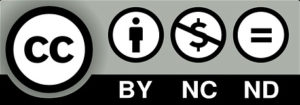ANALYSIS OF THE PRESENT SITUATION
The number of blind and visually impaired children between 0 and 4 years old is relatively small, but the impact of these early years of visual difficulties is critical to establish their future inclusion possibilities.

At the time of birth, an index of 1 per 3000 live births is estimated to be blind or have severe visual impairment. While some children without these problems come to learn mainly through sight, reading and receiving stimuli with their eyes, others, however, although they can manage getting around space using their visual remnants to move, must use their senses of hearing and touch for learning. A minority also lacks a minimum sight for both mobility and educational purposes. All of the above, plus the moment of appearance of the impairment and its evolution, will influence on the overall development of the child and will require different psychopedagogical treatments.
The many studies carried out on children suffering from mild and severe visual deficiencies have proven that developing care mechanisms as early as possible is paramount for them to reach an appropriate maturity and to achieve full inclusion in their families, school, and also socially, without their visual handicap preventing a healthy development.
This early attention to children with visual impairment should begin before 4 years of age and should direct its efforts towards providing stimuli appropriate to their childhood development stage, but considering each individual case. This must be an enriching and compensating mechanism; its true objective is to ease miscellaneous situations, not improvised, with specific stimuli that improve the child’s development in various areas: motor, cognitive, social, language, and personal autonomy abilities.
LOW VISION CHILDHOOD IN EDUCATION
Some years ago, the specific education for children with blindness or severe visual impairment was mainly carried out in family or controlled environments for specific training, isolated from the rest of pre-primary schools.

However, new studies (such as “La inclusión en la educación: Como hacerla realidad” from “Foro Educativo”, the “Manual de Educación Inclusiva, pág. 16. Ministerio de Educación, 2006, Lima-Perú” or the Primer “Abramos paso a la escuela inclusiva”) advocate for the education of blind children along with non-impaired children in regular schools. This Integrated education offers more possibilities of psychosocial development than a segregated one, which has more protectionist traits.
The goal of this type of education is the social and occupational integration of the blind, so that the latter becomes an individual capable of normally participating and interacting with non-visually impaired people and to have the same productivity and efficiency than they have.
IN EUROPE

In last years in Europe the low vision childhood in schools has increased to the majority. The integration of students with special educational needs in European educational systems in 2005 and 2012 are:
| Italy | 99,00% |
| Iceland | 94,10% |
| malt | 90,50% |
| Norway | 90,30% |
| Lithuania | 90,00% |
| Spain | 83,50% |
| Ireland | 80,30% |
| Hungary | 62,10% |
| Denmark | 59,10% |
| Austria | 57,90% |
| Finland | 54,50% |
| Czech Republic | 54,20% |
| United Kingdom, England) | 49,20% |
| Luxembourg | 44,50% |
| Slovakia | 42,10% |
| Poland | 41,80% |
| Estonia | 31,50% |
| Latvia | 25,50% |
| France | 25,30% |
| Germany | 21,30% |
| Flemish Belgium | 16,70% |
| Francophone Belgium | 1,40% |
| Sweden | – |
| Portugal | – |
| Cyprus | – |
| Slovenia | – |
| Holland | – |
| Greece | – |
IN SPAIN

Pre-primary education in Spain is up to 6 years of age. Although it is not a compulsory education stage, the second cycle is free in all publicly-funded schools (public schools and publicly-funded private schools). Public schools providing it are called pre-primary schools and those also offering primary education are called pre-primary and primary schools.
IN ITALY

The Italian education and training system includes ECEC (0-3 and 3-6), primary, secondary, post-secondary and higher education.
Early childhood education and care (ECEC) for children aged less than 3 years is offered by educational services (servizi educativi)
ECEC for children aged from 3 to 6 years is available at preprimary schools (scuole dell’infanzia).
The two offers make up a single ECEC system, called ‘integrated system’, which is part of the education system and is not compulsory. Although being part of the same system, the ECEC 0-3 is organised by the Regions according to the single regional legislations, while the 3-6 offer is under the responsibility of the Ministry of education.
IN NORWAY

Children in Norway are entitled to a place in a kindergarten from the age of one. About 50 percent of kindergartens are private, but they are government funded. Fees paid by parents are moderate and are regulated by the government. Fees are the same for public and private institutions. Kindergartens in Norway take a holistic approach to the education and care of children under school age. Norwegian kindergartens are intended to promote well-being and enjoyment through play and learning, and to foster children’s natural creativity, curiosity and develop their language and social skills. Kindergartens shall also prepare children for school. Access to kindergartens of high quality is believed to benefit the children, families and society as a whole.


